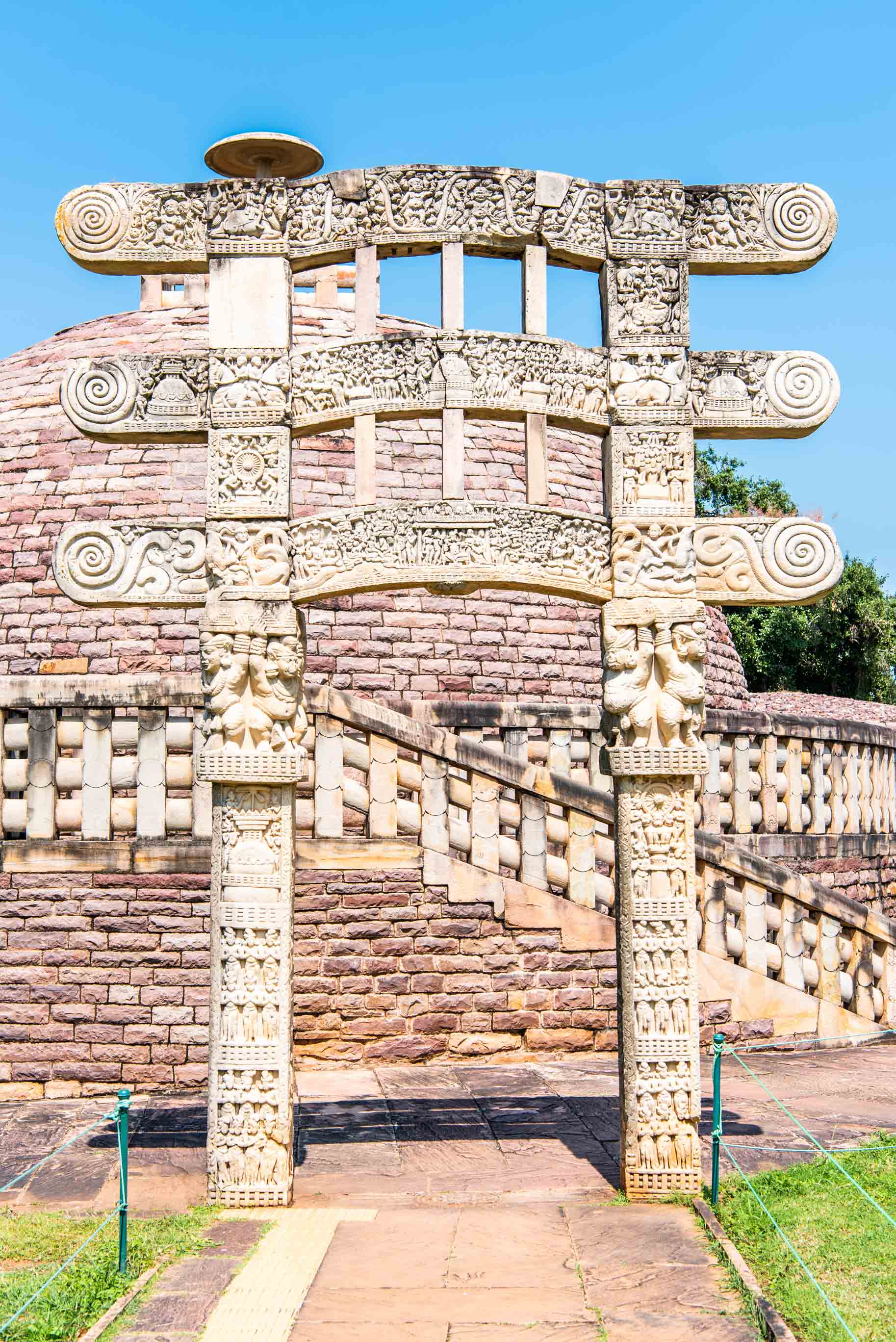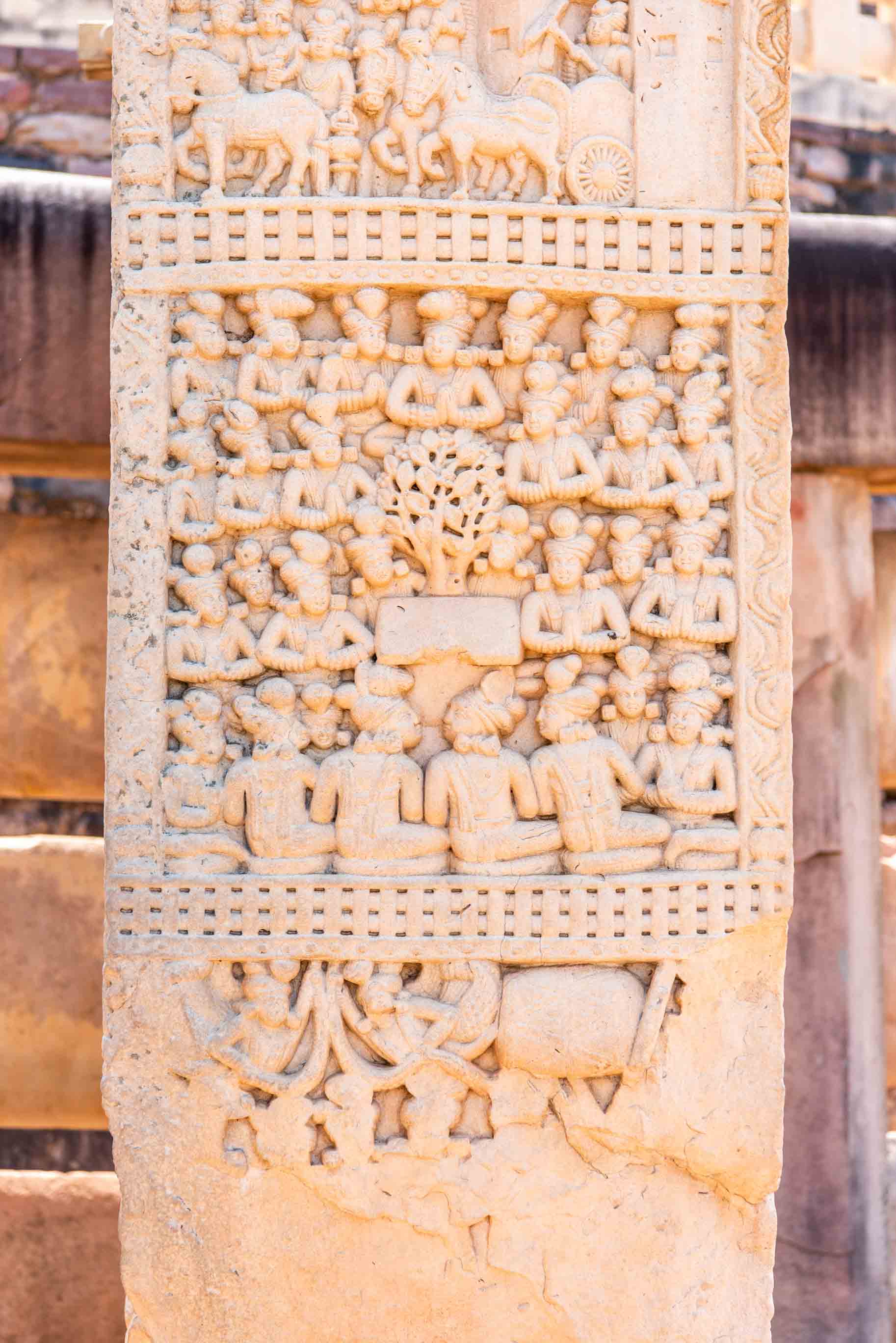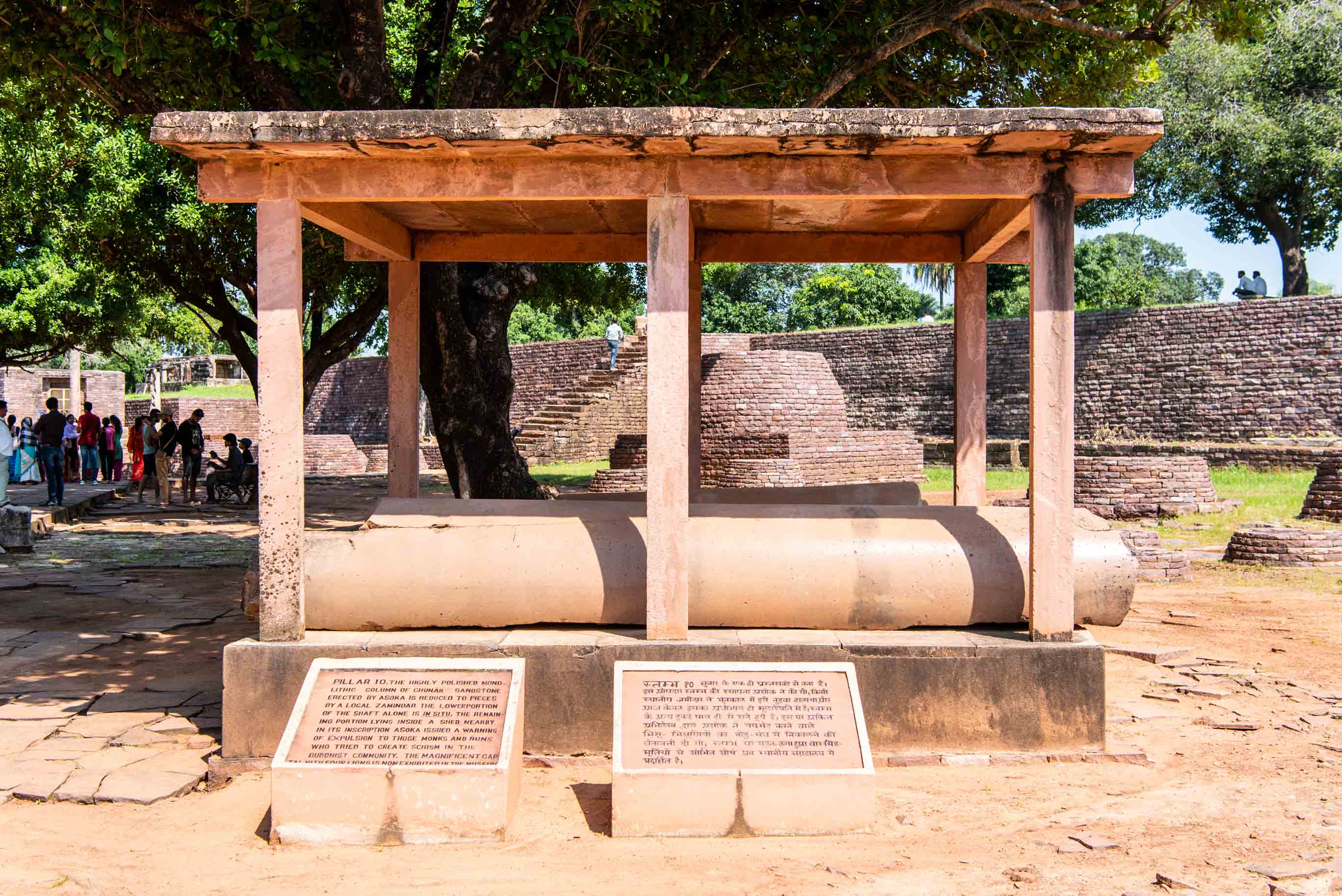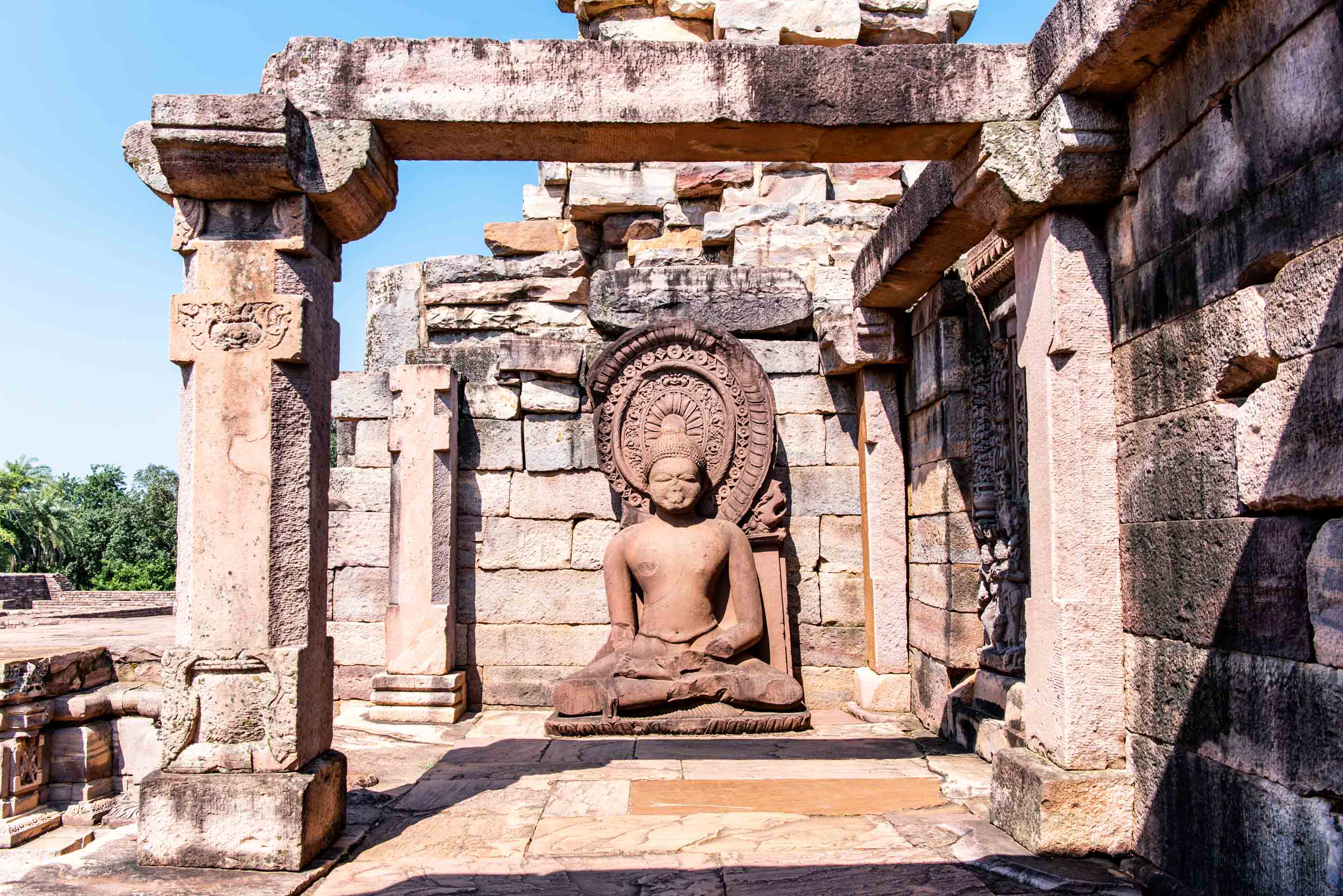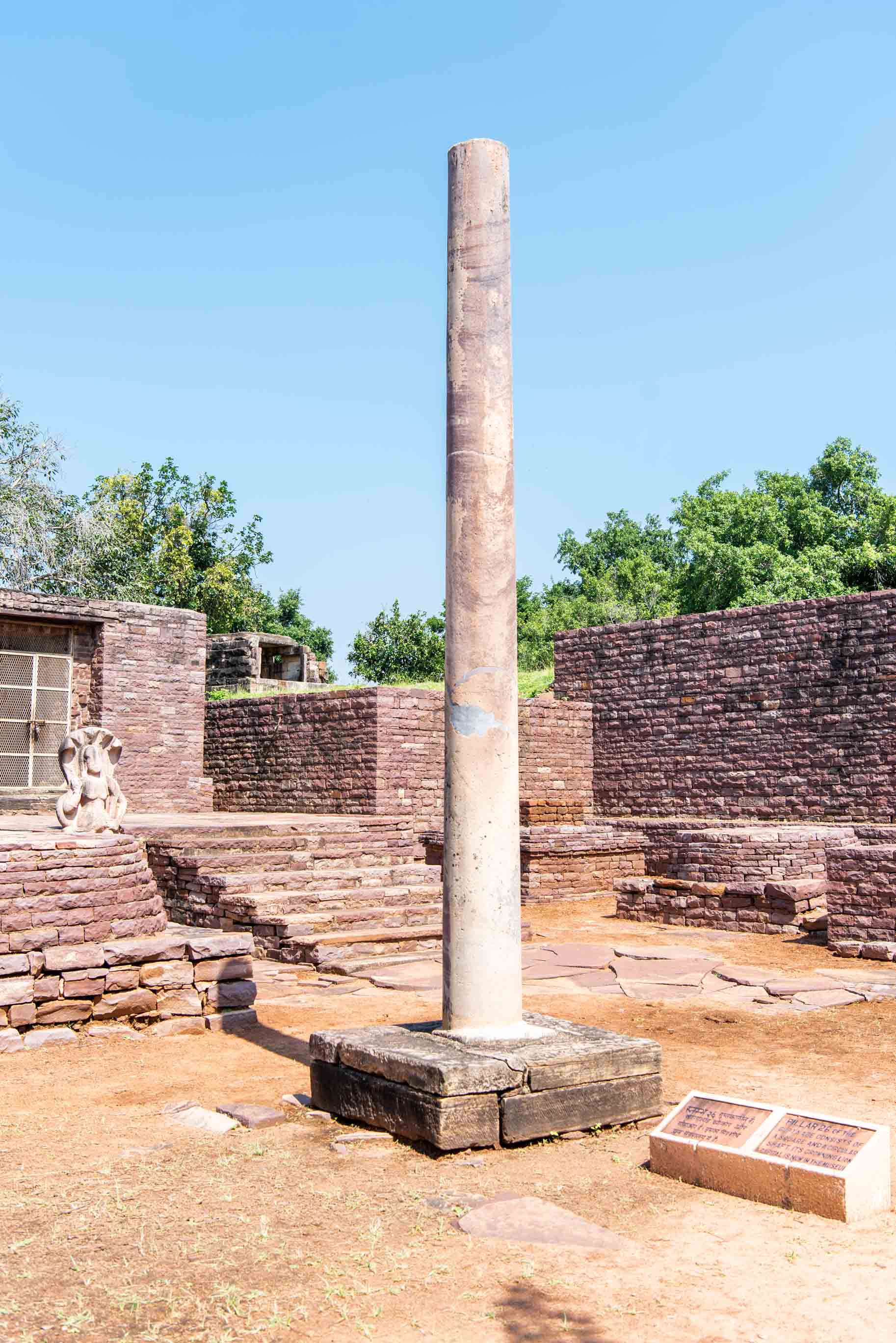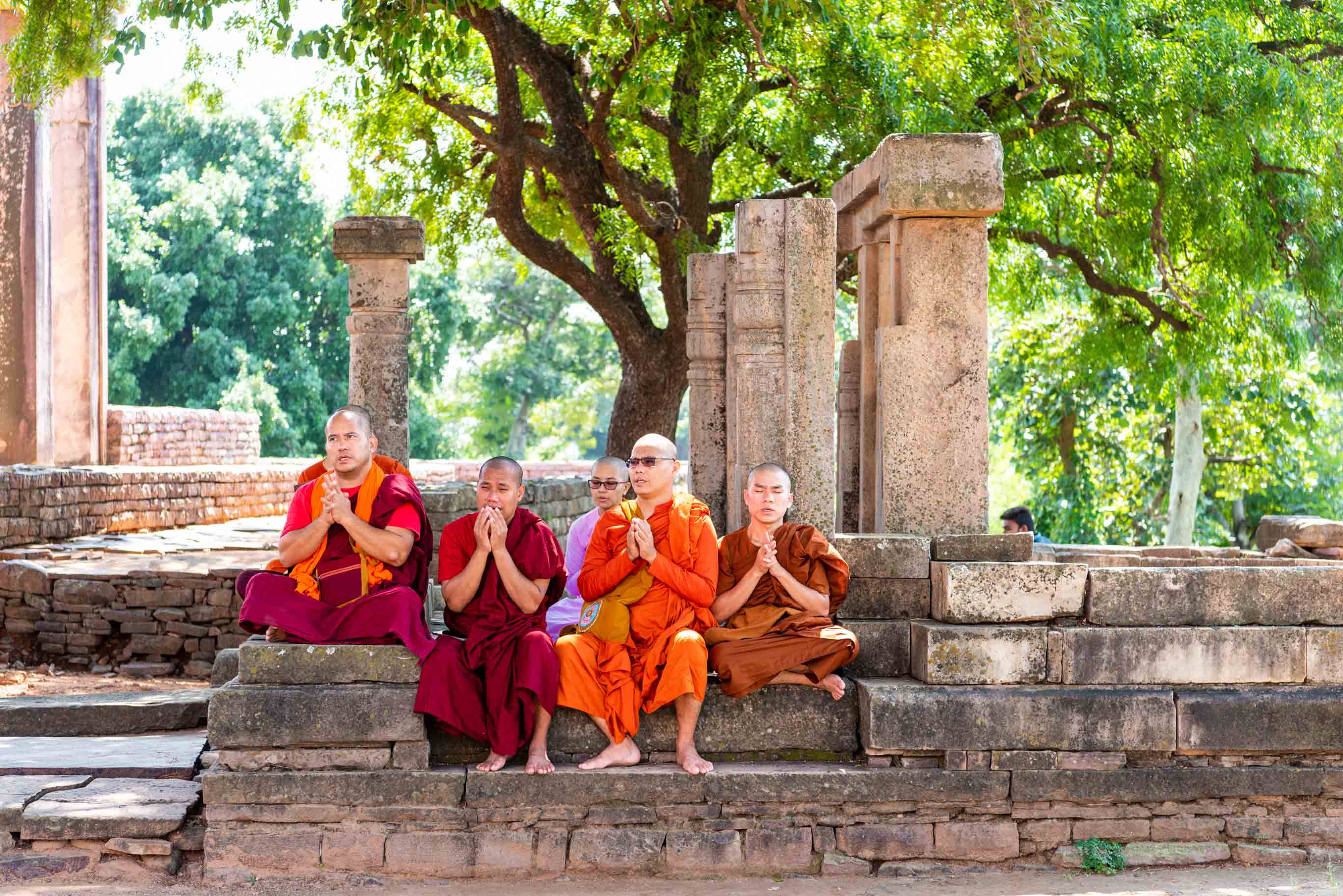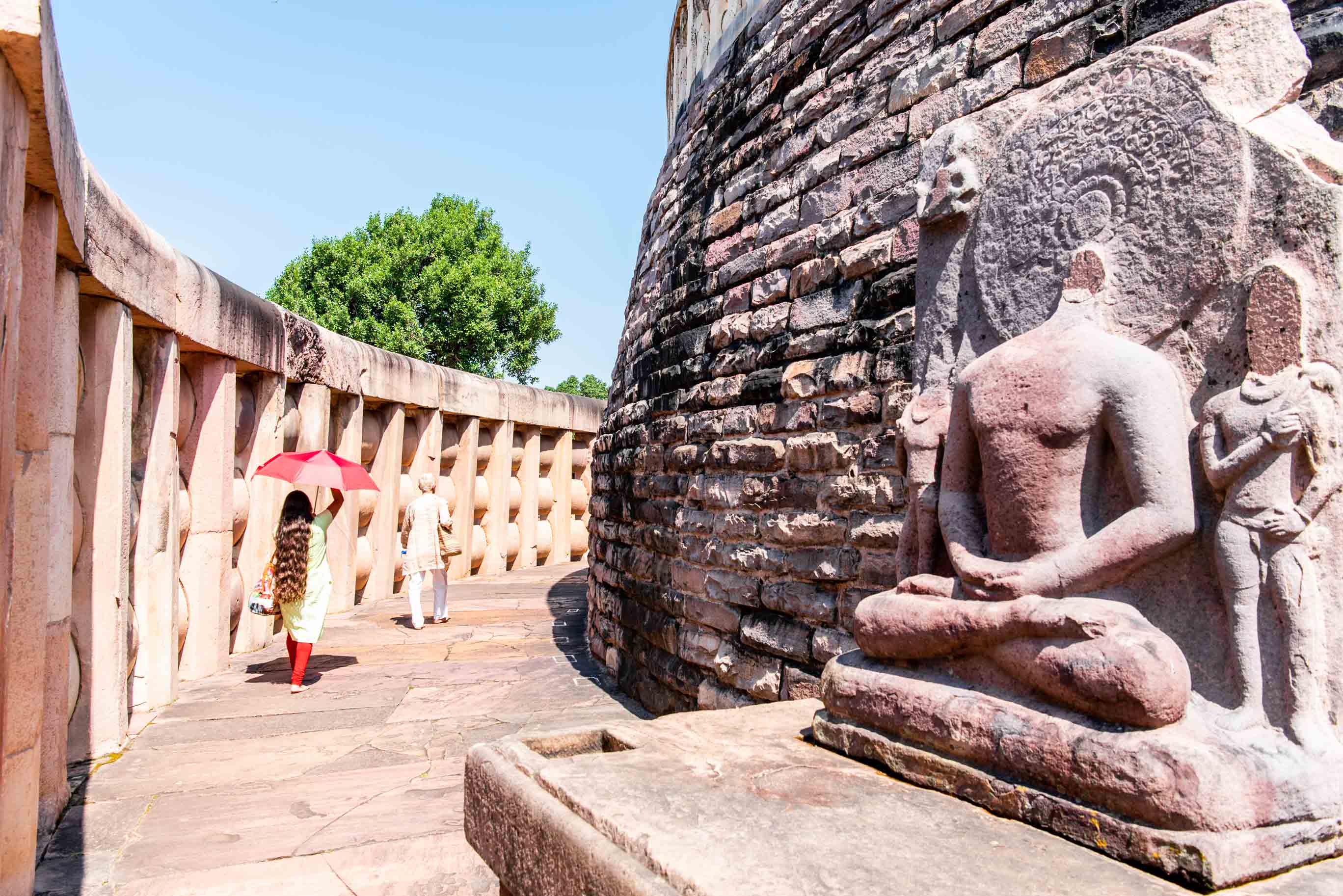The UNESCO World Heritage Site of Sanchi is located in the Raisen district of Madhya Pradesh, 46km/1.5
In 1818, Major General James Taylor of Bengal Cavalry stumbled upon some ruins. Later, in 1819, Captain Edward Fell published an article on the remains found at a place called Sanchee Kanikhera. It was 93 years later, between 1912 and 1919, under the supervision of ASI Director Sir John Marshall, these structures were restored to their present condition.
The Great Stupa at Sanchi (Stupa no. 1), whose construction was started by Mauryan emperor Ashoka around mid-3rd century BCE, was later enlarged during the Shunga dynasty. It is one of the most important Buddhist monuments, a testimony to the exemplary Buddhist art and architecture. The Great Stupa has four gateways in each direction while Stupa 3, which is located on the northeast side of the Great Stupa and similar in design,
though smaller, has a single gateway on the south side. Stupa 2 which is halfway down the hill to the west (right from Stupa 1) has no gateway. All the gateways and architraves in Sanchi complex depict events from the life of Lord Buddha where he is represented symbolically through a wheel, a tree, an empty throne, or a pair of footprints. Other than stupas, tourists can see Ashoka Pillar number 10, Temple number 40, Shunga Pillar number 25, Gupta Temple number 45, Temple number 17, Temple number 18 and the Great Bowl.
Even an entire day at Sanchi is not enough when you start focussing on elaborate toranas (ornamental gateways), carvings, other sculptures and narrative behind each of them.

